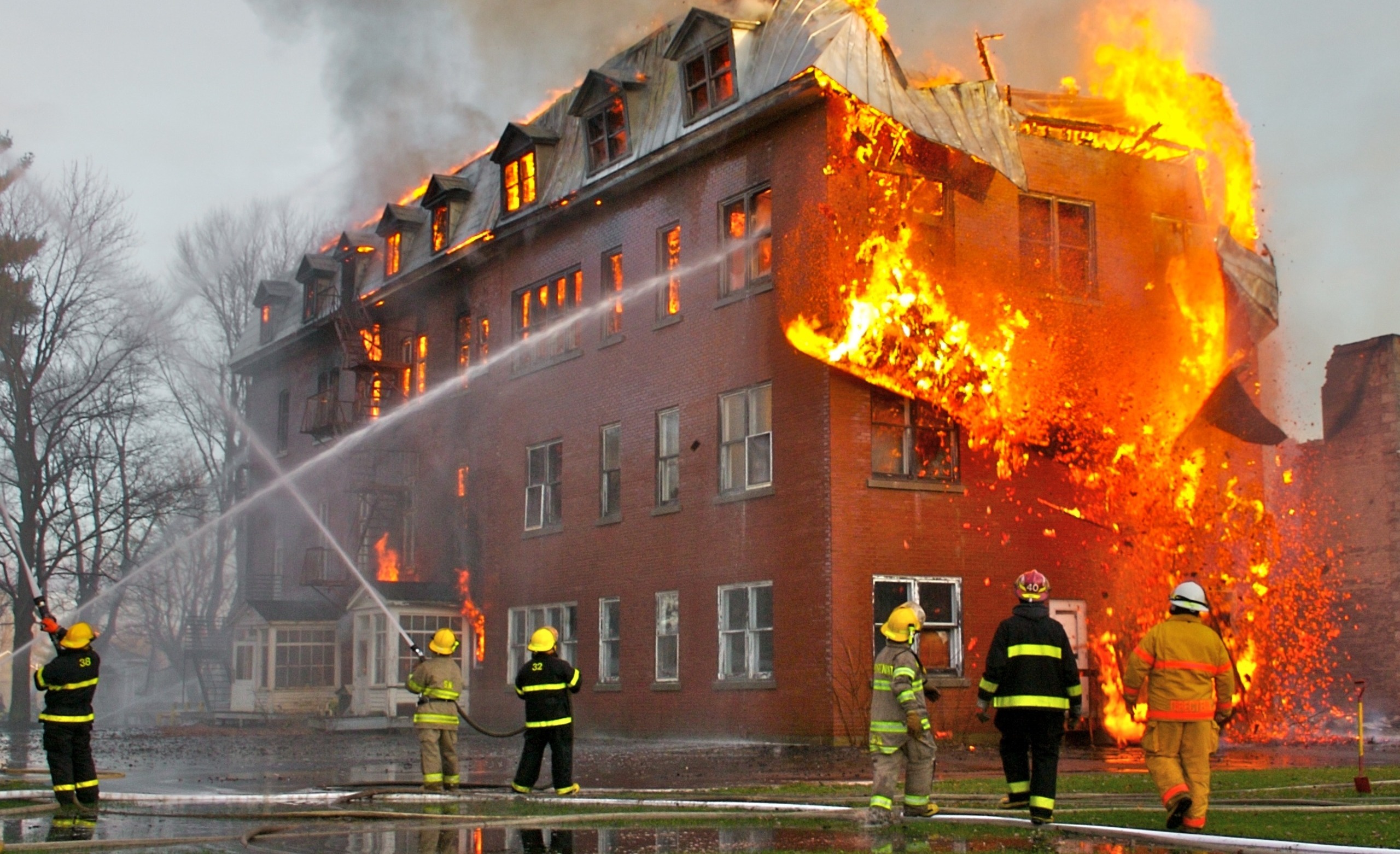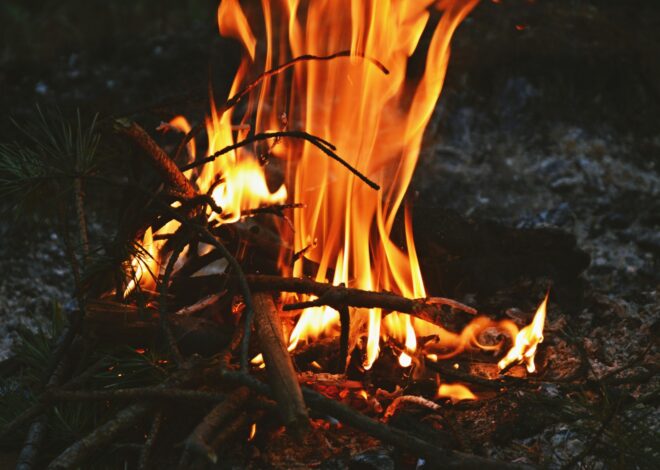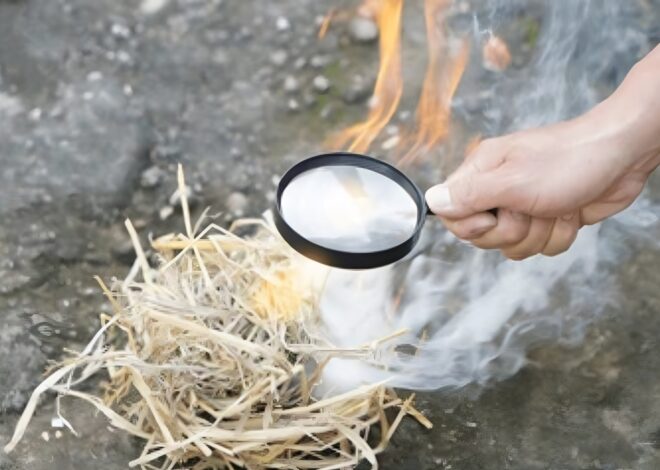
How To Survive A Building Fire
Welcome to our comprehensive guide on how to survive a building fire. Picture this: You’re at home, going about your day when suddenly you smell smoke. Panic sets in as you realize there’s a fire in the building.
In moments like these, knowing how to survive a building fire can make all the difference between life and death. Fire safety is not just a precaution—it’s essential knowledge that could save you and your loved ones.
So, let’s dive into some crucial tips on how to stay safe during a building fire emergency.
The Importance of Fire Safety
Fire safety is a critical aspect of overall emergency preparedness. Fires can break out unexpectedly and spread rapidly, posing a serious threat to life and property. Understanding the importance of fire safety measures can help prevent disasters before they occur.
By being proactive in implementing fire safety protocols, you not only protect yourself but also those around you. Fire incidents can lead to devastating consequences, including injuries, fatalities, and significant damage to buildings.
Educating yourself on fire prevention strategies and knowing how to respond swiftly in case of a fire are key components of ensuring your safety. Simple actions like installing smoke alarms, practicing evacuation drills, and having functioning fire extinguishers can make a world of difference during an emergency.
Remember, when it comes to fires, every second counts. Prioritizing fire safety is not just about following rules—it’s about safeguarding lives and maintaining peace of mind for yourself and your community.
Preparing for a Fire Emergency
Preparing for a fire emergency is crucial for the safety of everyone in a building. It’s essential to have an evacuation plan in place that outlines escape routes and meeting points. Make sure all occupants are familiar with the plan, including children and elderly individuals.
Regularly check smoke alarms to ensure they are working correctly. Replace batteries as needed and test the alarms monthly. Consider installing fire extinguishers in key areas of the building, such as the kitchen or near electrical panels.
Educate yourself on how to properly use a fire extinguisher. Remember the acronym PASS: Pull, Aim, Squeeze, Sweep. Keep important documents and valuables in a secure location that is easily accessible during an emergency.
Practice fire drills regularly so that everyone knows what to do without hesitation if a real emergency arises. Stay calm and follow your evacuation plan swiftly but safely in case of a fire alarm sounding. Being prepared can save lives when seconds count during a fire emergency situation.
What to Do in Case of a Building Fire
In the event of a building fire, staying calm is crucial. Your first priority should be to alert others by yelling “Fire!” as you evacuate. If possible, touch doors before opening them – if they’re hot, there might be fire on the other side. Stay low to avoid smoke inhalation; clean air is closer to the ground.
If you can’t exit your room due to flames or heavy smoke, seal gaps around doors with clothing and signal for help through windows. Remember: never use elevators during a fire as they could malfunction and trap you inside. Have a predetermined meeting spot outside where everyone can gather safely after escaping.
Practice makes perfect when it comes to emergency drills – ensure that all household members know multiple escape routes from every room in case one is blocked. Being prepared can make all the difference in surviving a building fire situation without panicking or risking lives unnecessarily.
How to Escape Safely
When faced with a building fire, escaping safely is paramount. The first step is to remain calm and assess the situation. Check doors for heat before opening; if hot, do not open as it may lead to a blaze rushing in. Instead, use an alternate exit like windows or another door.
If smoke is present, stay low to the ground where the air is clearer. Cover your nose and mouth with a cloth to avoid inhaling toxic fumes. Remember that every second counts in a fire emergency.
Create a plan with your family or coworkers beforehand so everyone knows how to evacuate efficiently. Practice drills regularly so that escape routes are familiar and instinctive during an actual emergency.
Once outside, move away from the building and assemble at a designated meeting point to ensure everyone has evacuated safely. Do not re-enter the building under any circumstances until authorities have deemed it safe again.
The Role of Fire Extinguishers and Smoke Alarms
Fire extinguishers and smoke alarms are crucial tools in fire safety preparedness. Fire extinguishers come in different types, such as water, foam, dry powder, and CO2, each suitable for combating specific types of fires. It’s essential to have the right type for your environment.
Smoke alarms act as early warning systems by detecting smoke and alerting occupants to potential fires. They provide valuable time for evacuation before conditions become life-threatening. Regularly check your smoke alarms to ensure they are functioning correctly.
In the event of a fire, knowing how to operate a fire extinguisher can make a significant difference in containing small fires before they escalate. Remember the acronym PASS: Pull the pin, Aim at the base of the fire, Squeeze the handle, Sweep from side to side.
Ensure that both fire extinguishers and smoke alarms are installed in key areas throughout your building – kitchens, bedrooms, living rooms – to maximize their effectiveness in protecting lives and property from the devastation of a building fire.
Dealing with Smoke Inhalation and Burns
Smoke inhalation and burns are serious risks during a building fire. Inhaling smoke can cause respiratory issues, irritate the lungs, and lead to further complications. If you find yourself in a smoky environment, stay close to the ground where the air is clearer.
Cover your nose and mouth with a cloth or mask to reduce smoke intake. Try to breathe through your nose as it filters out more particles than breathing through the mouth. Avoid inhaling deeply and move towards an exit swiftly but cautiously.
In case of burns, cool the affected area immediately with cold water for at least 10 minutes. Never use ice directly on burns as it can worsen the damage. Remove any clothing near the burn site carefully to prevent further injury.
If someone else has sustained burns, assist them by covering their burn loosely with a clean cloth while waiting for medical help. Seek professional medical attention promptly after escaping from the fire-affected area. Remember that timely action is crucial in dealing with smoke inhalation and burns during a building fire situation.
Aftermath: Steps to Take Following a Building Fire
The aftermath of a building fire can be overwhelming and chaotic. Once the flames are extinguished, it’s crucial to prioritize safety and follow necessary steps. Ensure everyone is safe and accounted for. Contact emergency services immediately if anyone is missing.
Next, avoid re-entering the building until authorities deem it safe to do so. The structure may be unstable or hazardous due to damage from the fire. Wait for clearance before assessing the extent of the destruction.
Document any damage by taking photos or videos for insurance purposes. Keep records of expenses related to temporary housing or repairs caused by the fire. Notify your insurance company promptly to begin the claims process.
Seek support from family, friends, or counseling services if needed as dealing with a traumatic event like a fire can take an emotional toll on individuals. Remember that recovery takes time, so be patient with yourself during this challenging period following a building fire situation.
Conclusion
In the face of a building fire, being prepared can make all the difference. By understanding the importance of fire safety, knowing how to respond in an emergency, and learning key escape strategies, you can increase your chances of survival significantly. Remember that early detection through smoke alarms and quick action with fire extinguishers are crucial steps in staying safe.
Should you ever find yourself in a building fire situation, keep a clear head, stay low to avoid smoke inhalation, check doors for heat before opening them, and use available exits to escape safely. And don’t forget about caring for any injuries post-fire—seek medical attention if needed.
By following these guidelines and taking proactive measures to prevent fires in the first place, you can better protect yourself and those around you from this potentially devastating disaster. Stay informed on fire safety protocols regularly so that you’re always ready should an emergency arise. Your preparedness today could save lives tomorrow.



